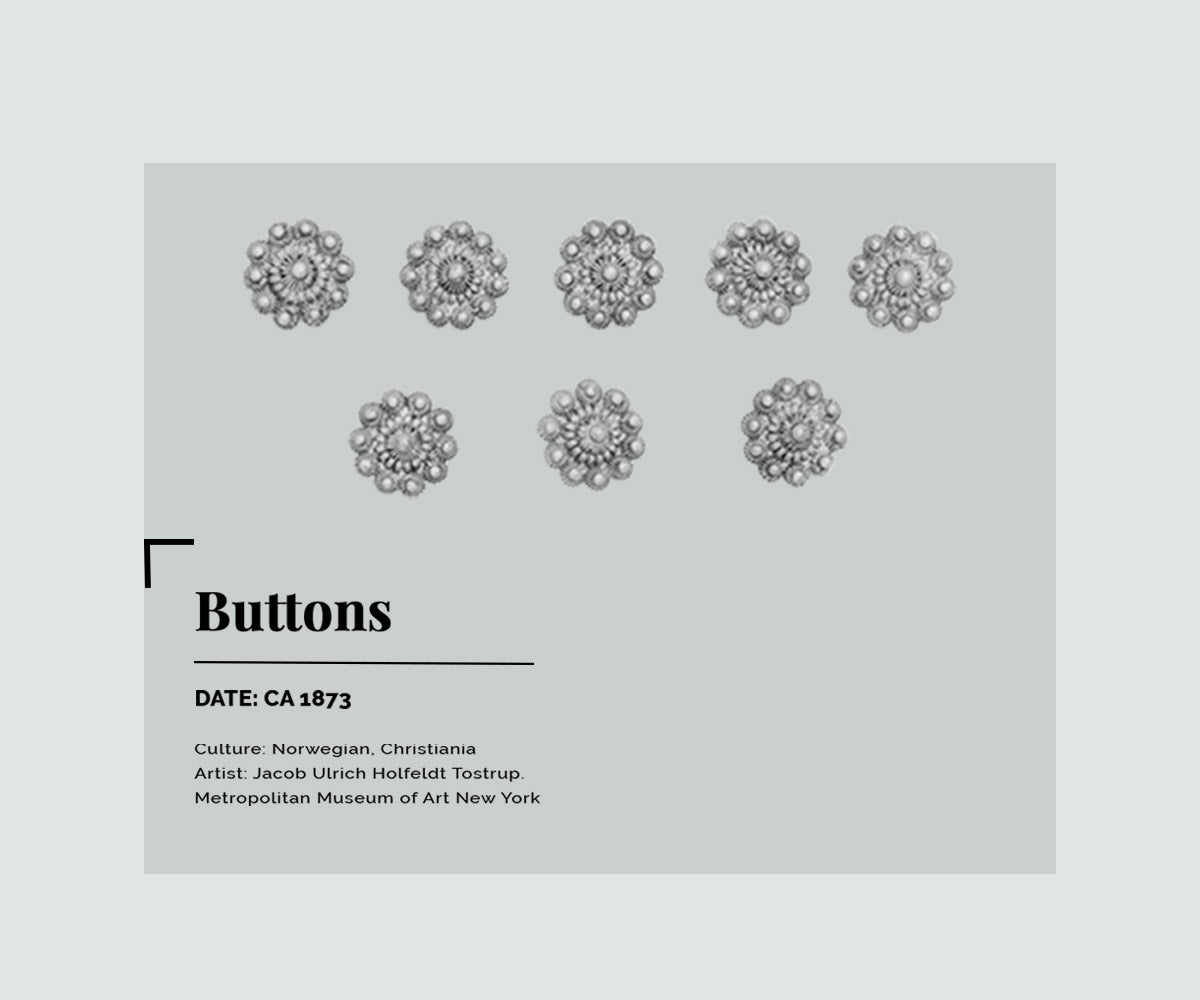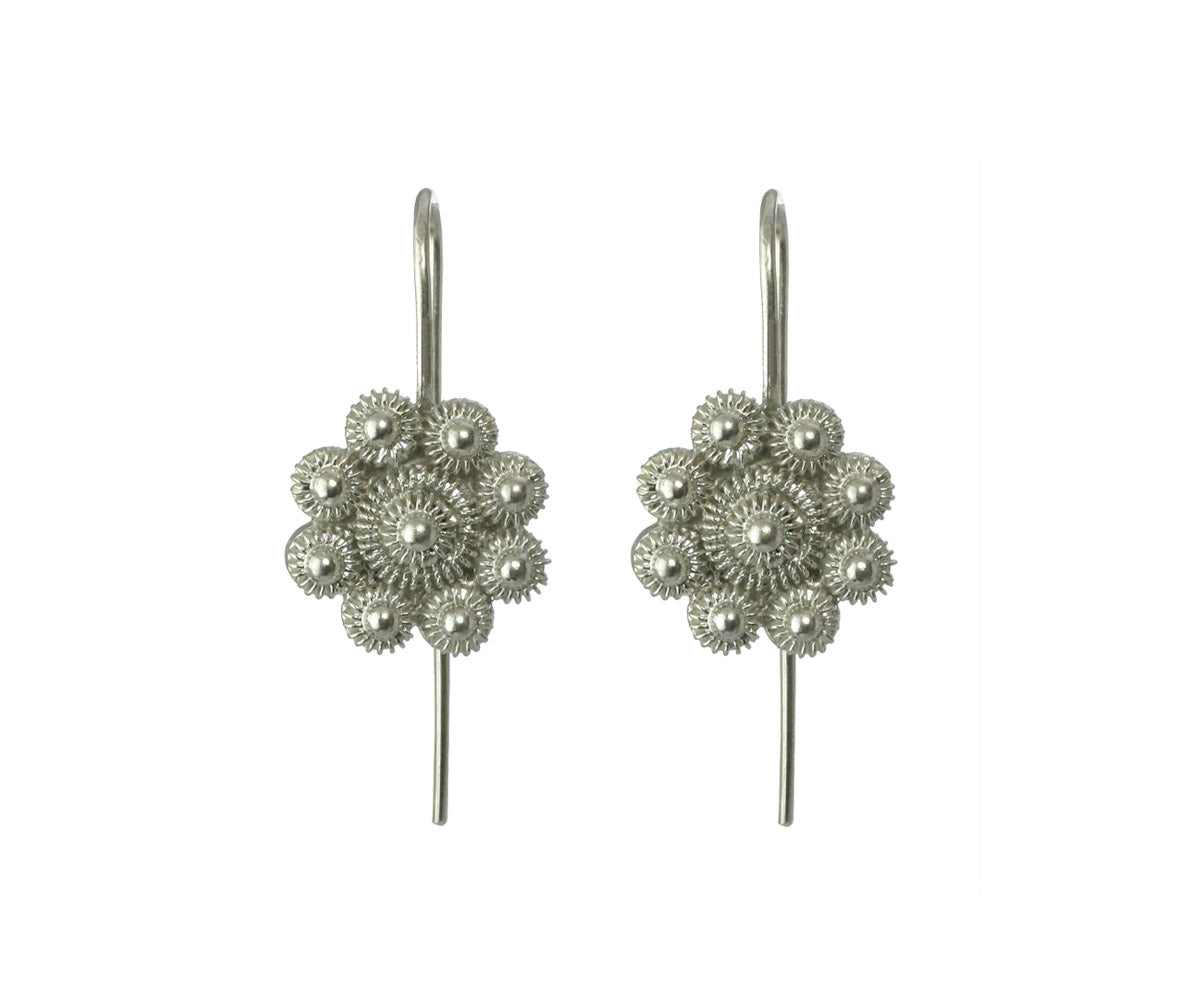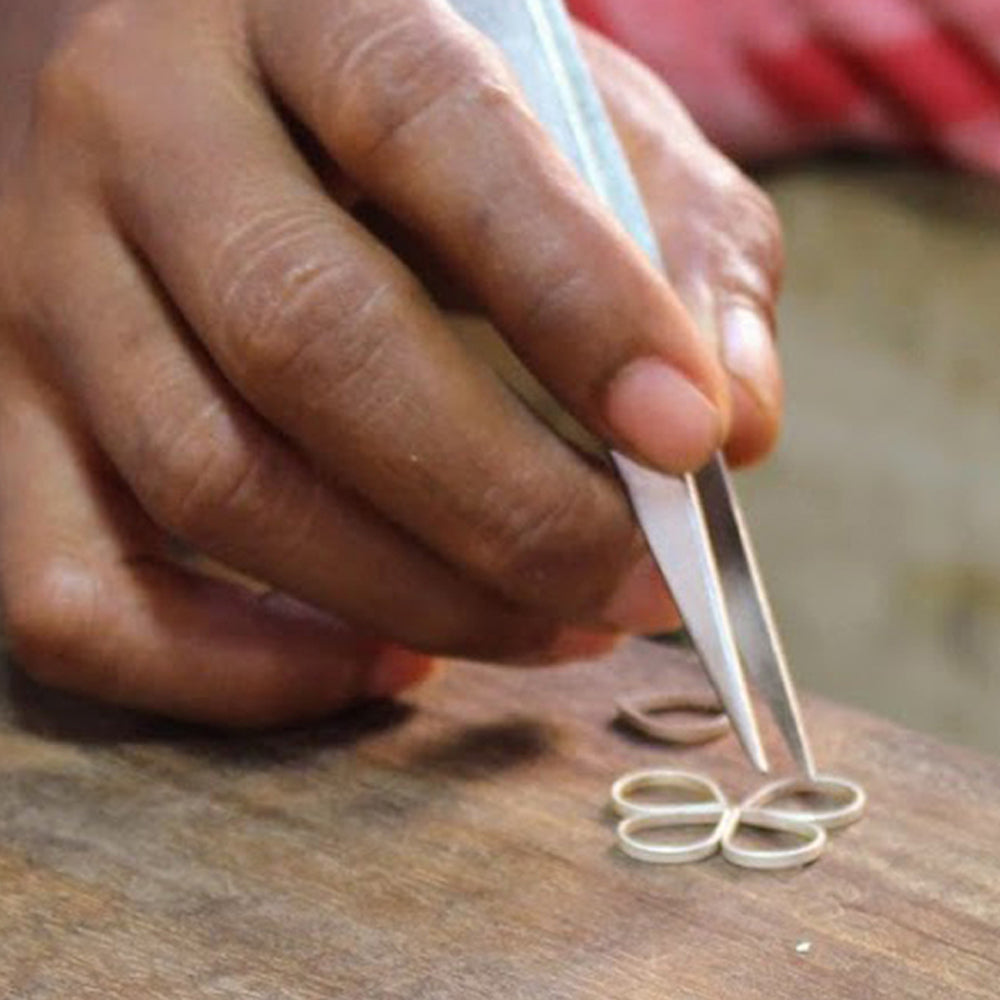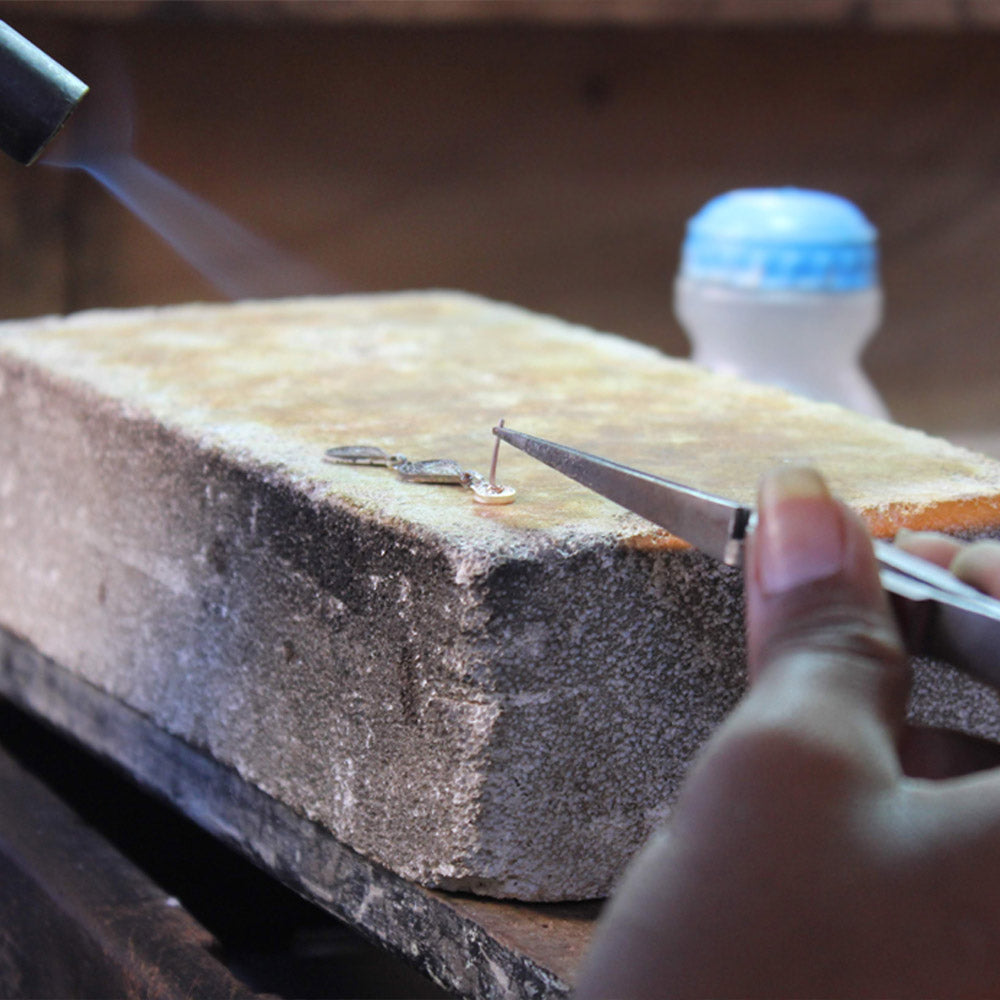Mompox, Colombia masters the art of filigree technique
Filigree is a delicate, ancient technique that is found in the jewelry of many early civilizations, including the Persians, Egyptians, and Greeks. The painstaking and intricate process of soldering tiny beads and twisted threads together also found its way into the impressive artwork of Italy, Portugal, and Spain. It was in the 15th-century colonial era when the technique was brought to America by Spanish settlers in the Mompox and Santa Fe de Antioquia regions of modern-day Colombia. Since then, the knowledge has been passed from generation to generation (in many cases jealously guarded) preserving the technique as it was used in ancient times.


Across the Puddle works closely with filigree experts to ensure careful attention to detail and accuracy in the reproduction process.
We hope you enjoy wearing and displaying these stunning jewelry pieces with pride.




Filigree Technique
To create filigree, the metal wire is first drawn through a series of increasingly smaller holes until it is thin enough to be shaped into intricate designs. The wire is then shaped and twisted using specialized tools, such as pliers, tweezers, and small hammers. The wire is carefully formed into delicate, swirling patterns, often resembling vines, leaves, and flowers.
The individual filigree pieces are then soldered together using a small flame, which requires a high level of skill and precision. Once the pieces are joined together, the filigree design is polished to create a smooth, seamless finish.
One of the most notable characteristics of filigree is its light and airy appearance, which is achieved through the use of thin, delicate wires and intricate designs. Filigree can be used to create a wide range of jewelry pieces, including earrings, necklaces, bracelets, and rings, and can be combined with other metalworking techniques to create truly unique and stunning designs.
Overall, the filigree technique is an art form that requires a great deal of patience, precision, and creativity, and is valued for its intricate and delicate beauty.


